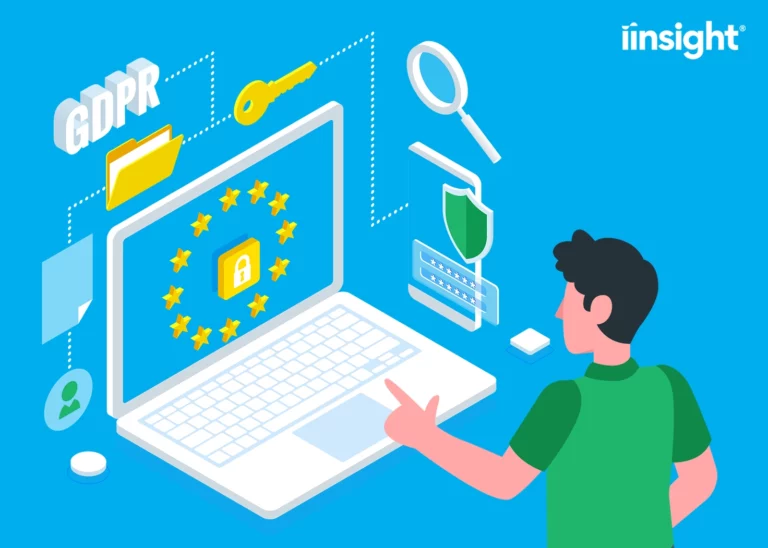The consistent challenge facing pediatric physical therapy clinics lies in the delicate balance of managing intricate care with the rigours of daily operations. Clinicians and managers alike grapple with the task of dedicating their time to hands-on patient care while also navigating the administrative labyrinth that comes with running a clinic.
This friction between patient-focused therapy and back-end efficiency is a common stumbling block, often leaving less room for what truly matters – the health and progress of young patients.
This article is the beacon to guide you through, illuminating eleven pioneering tools that streamline your clinic’s functions, liberate your time, and restore your focus to where it’s needed most: on providing exceptional, life-enhancing therapy to the children in your care. Join us in exploring these transformative solutions that speak directly to the heart of your clinic’s purpose.
1. Electronic Health Records (EHR) System
When managing a pediatric physical therapy clinic, having a top-notch EHR system is essential. This type of physical therapy software acts as the central nervous system of your clinic. It can store critical health information and make it all accessible with a few clicks.
Imagine a world where patient records are always at your fingertips, where the latest update on a child’s progress is a matter of a simple search, not a time-consuming hunt through files.
A robust EHR system does more than just keep records; it supports your entire team in providing targeted, effective therapy. With features that allow for quick updates, seamless sharing between professionals, and secure access to patient histories, the focus remains on the patient and not on paperwork.
What’s more, EHRs are evolving types of software. They can integrate more functionalities as the needs of your clinic grow and ensure that the care you provide is backed by the most up-to-date information available.
2. Appointment Scheduling Software
Next, let’s talk about the backbone of clinic management: appointment scheduling. Gone are the days of double-booked sessions and missed appointments. Modern scheduling software is designed to keep your clinic running like clockwork. It’s not just about pencilling in appointments; it’s about creating a workflow that makes sense for your therapists and the families they serve.
This software sends out reminders to parents, reducing the chance of no-shows and helping to plan their day around their child’s therapy session. On the clinic’s end, therapists can see their day at a glance, prepare for each appointment, and manage their time effectively. This is the kind of support that doesn’t just benefit the clinic’s operations; it directly improves the patient’s experience.
3. Billing and Invoicing Tools
Let’s address the financial heartbeat of your clinic: billing and invoicing. This process can be a thorn in the side of many clinics, but with the right tools, it can become a streamlined part of your operation. Physical therapy software that specializes in billing can handle everything from creating invoices to processing payments and even dealing with insurance claims.
These tools take the guesswork out of financials by ensuring that you’re compensated for the vital work you do without delay or error. They allow for a smoother financial dialogue between the clinic and the families and make sure that everyone is on the same page.
With less time spent on chasing payments or rectifying billing issues, your clinic can direct more energy towards what it does best – helping children thrive through therapy.
4. Patient Engagement Platforms
Patient engagement platforms are changing the game for physical therapy patients and the clinics that serve them. These platforms are like a bridge connecting therapists and patients outside of regular sessions. They provide a space for patients to:
- Check on their treatment plans
- Track their progress
- Find exercises they can do at home
For kids who need that extra encouragement, these platforms can include fun, interactive elements to keep them motivated about their therapy journey.
Engagement goes both ways. Therapists can use these tools to send messages and celebrate milestones, which makes a big difference in keeping spirits high. When patients feel involved and informed, they’re more likely to stick to their therapy programs and see better results.
5. Telehealth Solutions
Telehealth solutions are the next chapter in the story of pediatric therapy. Sometimes, making it to the clinic isn’t possible for a family, but with telehealth, that doesn’t mean therapy has to be put on hold.
Video calls and online tools bring the therapist’s expertise straight into the patient’s home. This means therapy can keep moving forward, no matter the circumstances.
For physical therapy patients, being able to show their therapist how they’re doing in their own space can be incredibly useful. It also gives therapists a chance to coach parents and caregivers through techniques and exercises. This flexibility can make a world of difference in a child’s therapy journey.
6. Clinical Decision Support Systems
Clinical decision support systems (CDSS) are key partners in the therapy process. They help therapists make the best choices for their patients’ care by providing up-to-date information and reminders. With CDSS, therapists can avoid guesswork and make informed decisions about treatments and exercises for each child.
These systems can show a therapist what’s worked in the past and help predict what might work in the future. They can also alert therapists to any safety concerns, like potential issues with a patient’s medications or allergies. This helps ensure each child gets the safest and most effective therapy possible.
7. Inventory Management Software
Inventory management software is vital for keeping your clinic well-stocked without clutter. These smart systems keep track of all the balls, bands, and balance equipment you need to make sure you never run out. They can also tell you when it’s time to replace something before it becomes worn out.
This kind of tool helps you manage resources wisely which saves money and space in the storage room. It means therapists have what they need when they need it, and they can focus on the kids, not on counting supplies.
8. Reporting and Analytics Tools
Reporting and analytics tools tell you the story of your clinic through data. They can answer questions like which exercises are helping kids the most or what times of day are busiest for therapy sessions. This software can take all the numbers and charts and turn them into clear reports that help you make smart decisions for your clinic.
You can see trends over time, like if certain seasons are busier than others. This helps you plan better and make sure your clinic is always ready to help your patients.
9. Compliance Management Software
Compliance management software keeps your clinic in line with healthcare laws and regulations. This type of program is like having a guide that makes sure you’re following all the rules. It can remind you when it’s time to update patient consent forms or when staff certifications need to be renewed.
It’s about more than just avoiding fines. It’s about keeping your clinic safe for everyone.
10. Staff Management and Scheduling Systems
Efficient PT operations hinge on a well-coordinated team, and that’s where staff management and scheduling systems come into play. These systems are pivotal for managing your team’s time and talents. They help ensure that each therapist’s schedule aligns with patient needs and clinic goals.
With real-time updates, everyone stays informed about who’s working, who’s out, and who’s covering which session. This means therapists can dedicate their energy to providing care, rather than worrying about mix-ups or miscommunications.
Staff management systems also track crucial details like time off, training schedules, and work hours. This is how your clinic ensures that the right staff are in the right place at the right time, ready to deliver top-notch care to the kids who walk through your doors.
11. Professional Development and Training Platforms
In any field, especially in healthcare, ongoing professional development is key. Professional development and training platforms offer a treasure trove of resources for therapists who want to stay sharp and keep their skills in tune with the latest practices.
These platforms provide courses, webinars, and other learning tools that your staff can use to learn new techniques or brush up on essential knowledge. They’re convenient and often allow therapists to learn at their own pace and on their own schedule. This is crucial in a busy clinic where finding time for training can be a challenge.
With access to a world of learning, your therapists can continue to grow professionally. These key tools ensure that your clinic remains at the forefront of pediatric physical therapy.
One Tool For Pediatric Physical Therapy Clinics
Embracing the right technological companions is essential for pediatric physical therapy clinics aiming to redefine patient care and operational efficacy. At Be Software International, we understand the intricacies of your daily challenges. Our flagship software, iinsight®, is engineered to integrate with the ebb and flow of your clinic’s unique rhythm to ensure your focus remains undivided on the young patients entrusted to your care.
Let today be the day you decide to redefine efficiency in your practice. Book a demo of iinsight® and experience the potential of seamless clinic management first-hand.











